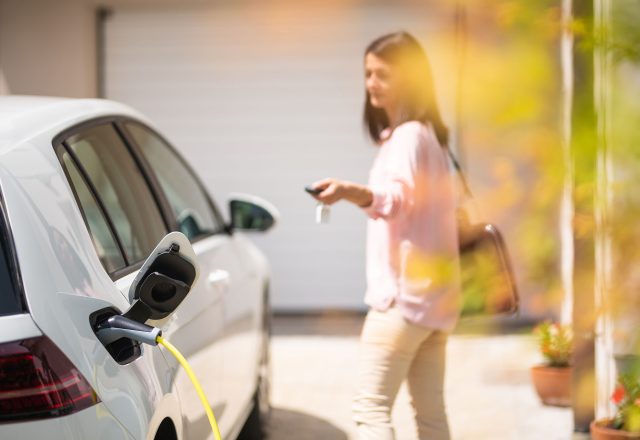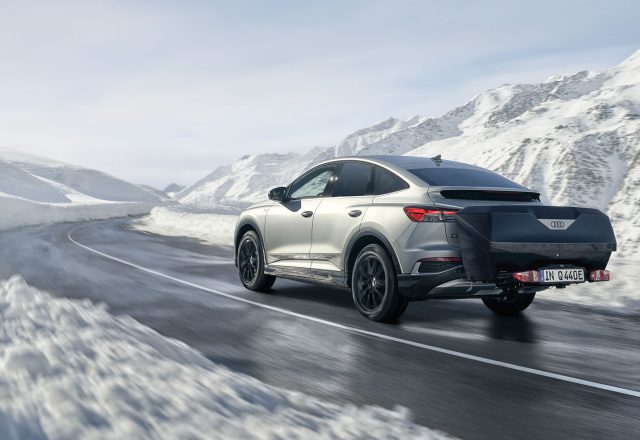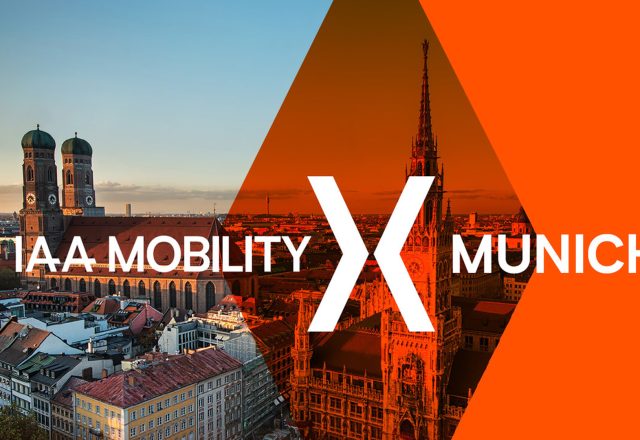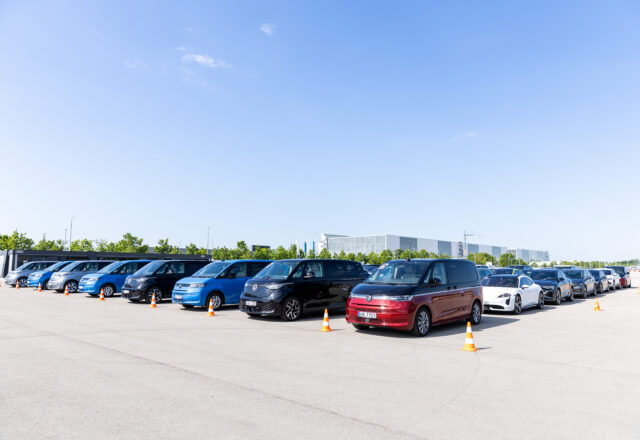Long journeys are not for electric cars? Far from it! – With the right planning, long-distance business trips are even more relaxed than ever. We will show you what to look out for on long hauls.
Choosing the right battery capacity
Before embarking on long-distance trips with electric vehicles, an important question needs to be answered. Especially before buying an electric vehicle. That’s because the choice of battery has an enormous impact on the range. The calculation is simple: the greater the battery capacity, the more kilometres an electric car can cover with one battery charge. For example, the battery for the ID.3 Pro stores 58 kWh of (net) energy (power consumption (NEDC) in kWh/100 km: 13.4; CO₂ emission in g/km: 0; efficiency class: A+) and allow a range of between 300 and 420 km1 kilometres. Making it ideal for medium-distance drivers who cover an average of 200 kilometres per day. If the field service radius is greater, however, the battery should also be able to store more power. A car like the ID.3 Pro S with a 77-kWh net battery capacity (power consumption (NEDC) in kWh/100 km combined: 14.1 – 13.5; CO₂ emission in g/km: 0; efficiency class: A+) can cover average distances of 390 to 550 kilometres1. That’s easily sufficient for far-away business meetings. Incidentally, the decision is made easier thanks to the EV Check app from Volkswagen, which recommends which electric vehicle from the Volkswagen AG and which battery is the right choice based on the current mobility profile.
Intelligent route guidance – the journey is the reward
Once the right model is chosen, the journey can begin. With around 40,000 public charging stations in Germany, an opportunity to charge the electric vehicle mid-journey can almost always be found. The charging times should be taken into account with longer trips to ensure punctual. Some digital assistance is also available here, however: intelligent navigation solutions like the e-tron route planner from Audi automatically calculate the stop-offs for essential charging. It coordinates all relevant data dynamically and on the basis of real-time data: the charge level of the battery, the past driving style, the desired arrival time and the current availability and charging capacity of the charging stations along the planned route. An algorithm calculates the optimum route in each case and navigates reliably from stage to stage. Its primary goal: to move quickly. Depending on the traffic situation and the availability of charging stations, it may make more sense to allow for two short charging stops at stations that offer high charging capacity, than one longer stop at a weaker charging station. There’s no need for the driver to worry about this though – the route planner takes care of everything automatically.
Volkswagen also makes it easy with its “We Charge” service. This offers numerous digital functions relating to charging, all of which can be used via the We Connect ID. app. For example, the user can plan intelligent routes with efficient charging stops in just a few clicks. In the car, the multi-stop route planning in the navigation system takes over the optimal planning of route and charging stops.
Specializing in fueling and charging solutions for fleet customers, LogPay Transport Services GmbH, a wholly owned subsidiary of VW Financial Services, offers the LogPay Charge&Fuel Card and the associated app. The card combines the benefits of a classic fuel card with the additional option of charging electricity. As a result, owners of plug-in hybrid vehicles or electric vehicles can use the LogPay Charge&Fuel Card to easily charge electricity at more than 55,000 charging points (electricity) in Germany (including fast charging stations from IONITY). Furthermore, Logpay already offers cross-border charging at over 230,000 charging points in Germany, Austria, Italy, France, Spain, Norway, the Netherlands, Sweden, Belgium, the United Kingdom, Switzerland and Poland. In addition, the Charge&Fuel Card can be used to purchase fuel and lubricants as well as CNG and other vehicle-related goods and services such as car washes at more than 18,000 service stations. The app’s convenient search and filter function makes it very easy to keep track of all connected charging stations as well as their receipt status. The charging stations are also displayed in the navigation system.
Charging breaks – time to relax or work
It is advisable before every longer trip to charge the car fully to reach the furthest possible stage of the journey. But not on a regular basis – a charge level of between 20 and 80 per cent is best. In this range, the car charges faster, to protect the battery in the long term.
It is therefore advisable to instead go to the charging station an extra time. Such charging breaks definitely have their benefits, since drivers can also take the opportunity to recharge their own batteries with a small snack or a bit of exercise. Of course, the time can also be used productively – for example to make calls or answer emails. In any case, stop-offs ensure that the second – and often final – leg of the journey can be started with the driver feeling refreshed and revived. And another tip: if the driver’s preferred service area or attractive country inn with charging station is on the route, then these locations can simply be selected as stop-offs in the route planner – making the break even more pleasant.
Charging at up to 230,000 charging points via a single app
And speaking of charging stations: the electricity naturally has to be paid for. However, many operators of electric charging stations still use different payment systems, rates and billing processes. It helps here to have a partner who can offer a one-stop service to make charging at the most varied locations as simple as possible: Volkswagen We Charge, the LogPay Charge&Fuel Card and the Audi e-tron Charging Service offer their customers precisely this convenience. Using just one app or card, up to 230,000 charging points in Europe can be activated without prior registration – including at the 400 IONITY charging hubs in Europe, which allow fast charging at a capacity of up to 350 kW along the most important motorways in Europe. Payment processes can also be carried out easily and transparently using the app. Customers receive a summarised invoice once a month. And with the frequent driver rates offered by Volkswagen We Charge, the Charge&Fuel Card and the Audi e-tron Charging Service, fleet customers and company car drivers benefit from especially attractive terms with IONITY. Intelligent navigation, simple charging and convenient payment – the relaxed way to travel with electric power.
General tips for increased range on long-distance routes
Gliding instead of racing – that’s the perfect slogan for an electric car. Moderate and steady speeds are best – with few sharp accelerations and high-speed journeys. Thanks to the energy-recovery technology in electric vehicles, the battery is supplied with new power with each braking process. So simply anticipate and take your foot off the accelerator pedal in good time before reaching traffic lights or a traffic jam. The car reduces speed automatically and and recharges the battery with the braking energy. The correct tyre pressure should also be ensured always – if it is too low, the vehicle consumes more electricity. It is also advisable in winter and high summer to heat up and cool down the interior of the car while the car is still charging at home so that the battery can “concentrate” fully on the road.
1 The actual range varies in practice depending on driving style, speed, use of comfort/auxiliary consumers, outside temperature, number of passengers/load, and topography. The range mentioned above, which is expected to be achieved by 80% of our customers on an annual average, provides orientation for the respective vehicle. The lower limit of the range also covers journeys at moderate motorway speeds and journeys at low outside temperatures in winter.
2 Source: BDEW Bundesverband der Energie- und Wasserwirtschaft e.V.
© Volkswagen AG










